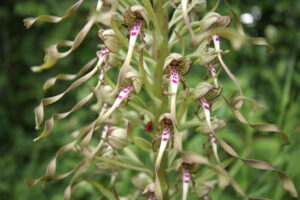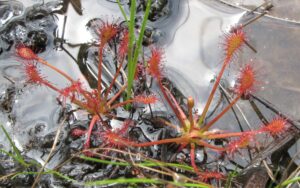2021 County Report for South Hampshire
Martin Rand
Despite a lack of direction towards any single recording project, many botanists did a lot of recording. Bob Wardell continued to build thorough coverage for the SE; highlights included extensions to the coastal range of Anisantha madritensis (Compact Brome) and a large new population of Silene nutans (Nottingham Catchfly). Phil Collier and others did likewise in the SW, Mike Rowe getting many verified records of Cotoneaster and various hybrids.
My team and I surveyed local authority sites, adding substantially to localised records. An exceptional refind was Drosera intermedia (Oblong-leaved Sundew) on a mire near Southampton that is being restored following undergrazing – now one of only two localities outside the New Forest and Avon catchment. An expedition to a private estate in the Avon Valley to chase up historical Leersia records failed to find any but turned up new localities for Pulicaria vulgaris (Small Fleabane) and some good records of aquatics including unusual riverine mats of Chara globularis (Fragile Stonewort).
Other outstanding records included the first Himantoglossum (Lizard Orchid) for 90 years, and a new site for Fumaria reuteri (Martin's Ramping-fumitory). Lists of interesting finds are published yearly in Hampshire Flora Group (HFG)’s Flora News.
During the year I held several online ID workshops, which continue in 2022 together with some follow-up field trips. Coming up are HFG surveys of public and private sites, some repeated during the year. 2022 also marks the start of a collaboration with Wessex Rivers Trust to survey the catchments of our two largest chalk streams (Test and Itchen) for invasive non-natives and several native species thought to be declining.

